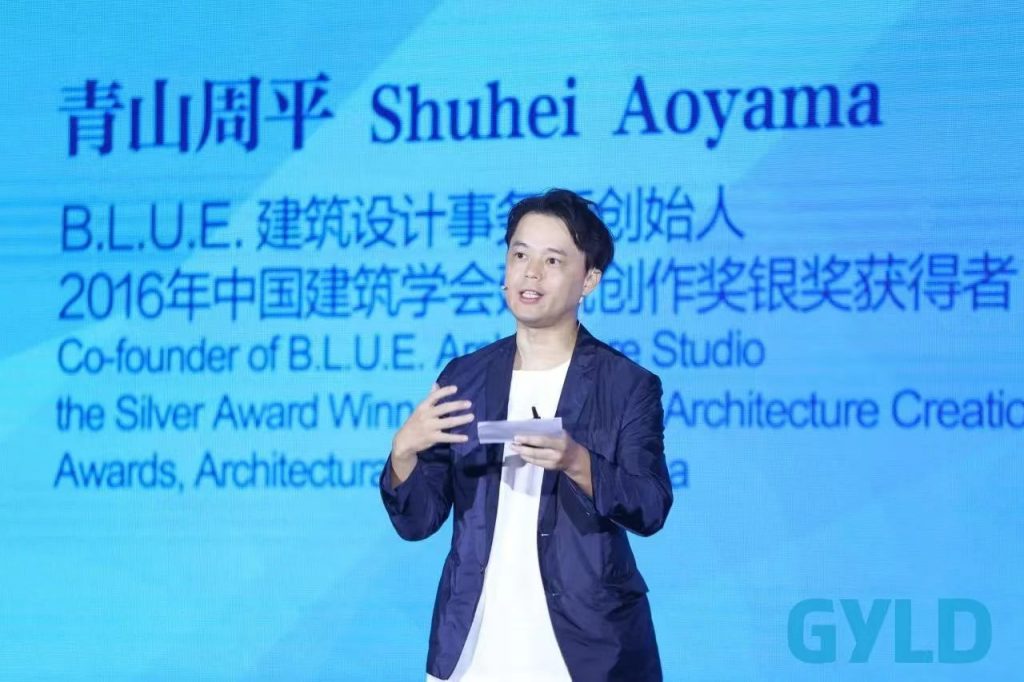【GYLD Talk 2023】Shuhei Aoyama: Youth Power & Architectural Innovation
 【GYLD Talk】Shuhei Aoyama: Youth Power & Architectural Innovation
【GYLD Talk】Shuhei Aoyama: Youth Power & Architectural InnovationHello, everyone. I am Shuhei Aoyama, an architect from Japan, currently living in Beijing. I will use Chinese for my speech.I work as an architect in Beijing, so I observe and pay attention to the changes in the current urban environment and societal lifestyles, as well as what changes might occur in the future of cities and architecture. This is a topic that I am particularly interested in. Today, I would like to share my perspective through a few design projects, emphasizing how the power of the young people is transforming architecture and cities, gradually shaping the cities and buildings of the future.
Firstly, the young people are changing traditional living patterns. Over the past few decades, there has been a significant demand for traditional family residences, such as two-bedroom or three-bedroom apartments, catering to parents and one child. However, it’s interesting to see new household patterns emerging, with single-person households becoming more common. We have designed a shared living community for young people where each individual’s home is like a movable box with shared living functions outside. Here, they live, work, create, and grow together. This model breaks away from the traditional notions of privacy and enclosure in housing, challenging our traditional understanding of home.
Secondly, the young people are altering the relationship between architecture and the city. Before the transformation of a small cafe in Shanghai, the space had no connection to the outside city; it was very isolated. After the renovation, we made the space completely open to the city, and young people love to sit in such open spaces. The new attitude of young people towards life, spatial experiences, and their evolving needs are changing the traditional disconnection between architecture and the city, making urban spaces more friendly, humane, and interactive.
Thirdly, the power of young people is shaping the possibilities of future spaces. The internet, smartphones, artificial intelligence, and big data have made our lives extremely convenient. Virtual spaces are expanding rapidly, and many aspects of our daily lives, such as work, education, shopping, and socializing, can now be conducted in virtual environments. In this context, the importance of physical spaces like architecture and the city may become smaller in the present or future. Given this, I am thinking about what value architects can provide to society in such an era. The space I am showing, from design to construction, was intentionally created by hand without the use of computers. Its rough craftsmanship brings a sense of authenticity to the space, offering a unique spatial experience and texture.
In conclusion, young people today have strong and fresh lifestyles and values, and these new demands for architecture and cities are transforming the future. We can expect to see many new architectural and urban models that we cannot imagine right now. As an architect, I am honored to be part of this process and excited to have the platform and opportunity to collaborate with others in creating the future of architecture and cities. Let’s look forward to the future of architecture and cities together.
Thank you.
About Speaker
Recommended Articles
- guangdong
- "Focusing on Global Development: Shaping our Future with the Power of Young People"-2023 “Global Young Leaders Dialogue (GYLD)” Annual Forum successfully held
- Apply Now!GYLD Annual Forum 2024
- Apply Now! Young Leaders at the GYLD Annual Forum 2025
- 【GYLD Talk 2023】Olesia Ermakova: Trying a Zero Waste Lifestyle












 CHINESE
CHINESE